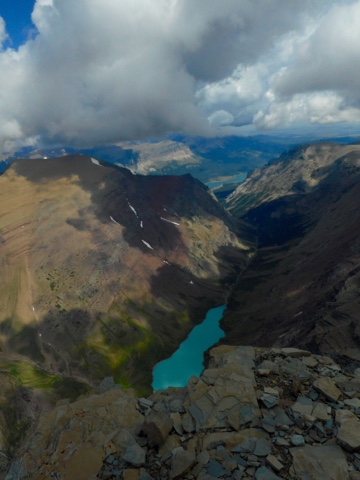This sums up the quest of my retirement.
So it's no wonder why I pursued a Wilderness Permit to take a look-see into Enchantment Basin.
The Basin is on the Bucket List of too many Wilderness Wanderers like myself. Scoring a permit is equivalent to winning both the Powerball and Megamillion lotteries within a week. In other words, highly unlikely. I tossed my name and money into the drawing and waited. I was rejected nine times. (About the same odds I'm having with women.)
My last resort was to arrive in person for a walk-up permit. The Forest Service website information wasn't encouraging. "About 50 people show up daily for a few spots." Between the lines, I could almost hear a snicker.
What the heck! I was in the neighborhood of cheesy (faux Bavarian-themed) Leavenworth, WA. I would fit this stopover into my BUSY schedule.
There were only three others hoping to "get lucky." The low turnout might have been the weather forecast of an 80% chance of precipitation. Who in their right mind wants to go up a mountain and get wet? Me. That's who.
My name was called! I hadn't even packed. I went into hyperdrive. I threw food, gear and a rain suit into my backpack and headed uphill for 3,600' in 6 miles. Thank you Starbucks Coffee for the caffeine aided energy boost.
By the time I arrived at Nada Lake, the 80% chance of rain became 100%. I set up my tent and threw me and my gear into it. The rain continued for four hours. I decided to stand down and see what tomorrow would bring.
I peeked out at first light, and saw benign skies. Two Starbucks coffee shots and two Clif Bars later, I was on my way.
I'm going to digress here.
With all the the Hullabaloo about E.B, I reckoned it would be an easy stroll. Most folks don't have challenging items on their To-Do list. OY! Was I wrong. From Snow Lake, the trail ascended 2,000' in two miles. During the in-your-face climb, the trail crossed rockslides, creeks, mud holes, granite ledges and slick tree roots. This was no Sunday mosey in Central Park. BTW: this turned out to be the easy access. The hard way was a scratched out route consisting of 2,600' of straight up in one mile. Ouch.
Now here's my second wrong assumption about Enchantment Basin. With a poetic name like this, I envisioned Julie Andrews pirouetting in a field of wildflowers. Of course, she would be belting out "The Hills are Alive with the Sound of Music!"
There were no wildflowers. There was nothing for them to grow on. It was all glacier scoured granite. The few tablespoons of soil were occupied by runty tamarisks/larch trees. They weren't about to share their precious substrate with some low life flowers.
It was all very wild. It was also raw beauty.
See for yourself.
I'll keep wandering. There is just too much to see. I'm getting frustrated by that thought.
Cheers from the White River campground in Mount Rainier National Park,
Jeff















































